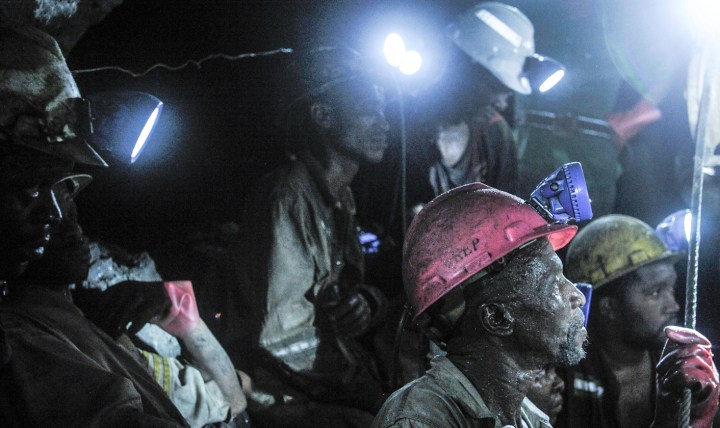South Africa
Africa Check: Have mining diseases fallen 42% in SA? It depends on how you select the data

The South African government’s mineral resources department claims there has been a “42% reduction in occupational diseases in the mining sector. ” Is this true? And what timeframe are they referring to? Researched by Kate Wilkinson for Africa Check.
For the past decade, lawyers representing thousands of South African mine workers suffering from the lung disease silicosis have been locked in a bitter legal battle for compensation with some of the biggest mining companies in the world.
The mines – which include AngloGold Ashanti, Gold Fields and Harmony Gold – are accused of “stalling” silicosis claims. Earlier this month, Business Times reported that Richard Meeran – a lawyer representing many of the miners – said the “families of workers fear they will die during court delays, resulting in the loss of their rights to general damages”.
The lawsuits have shone an uncomfortable spotlight on an increasingly embattled industry. It has been nearly two years since police shot and killed 34 striking mine workers at Marikana in South Africa’s platinum belt. Today the platinum industry is in crisis, mired in what is said to be the longest strike in South Africa’s history. The country’s GDP has shrunk for the first time since 2009. Mining output has reportedly fallen by 24.7% — its steepest drop in half a century.
It is against this backdrop, that South Africa’s department of mineral resources placed a billboard on the M2 highway near Johannesburg advertising a 42% reduction in occupational diseases in the mining sector.
What are occupational diseases?
Recognised occupational diseases in the mining sector include silicosis, pulmonary tuberculosis, noise-induced hearing loss, asbestosis and silico-tuberculosis amongst others. A list of recognised occupational diseases, including those that occur outside of the mining sector, can be found in schedule three of the Compensation for Occupational Injuries and Diseases Act.
The Mine Health and Safety Act requires all mines to maintain a system of medical surveillance and monitor employees exposed to health hazards. Based on the medical surveillance, the mines’ occupational medical practitioners must compile an annual report covering the health of all employees at the mine.
The number of occupational diseases must be reported to the Mine Health and Safety Inspectorate, who have a mandate to “safeguard the health and safety of mine employees and communities affected by mining operations”.
What years are being compared?
The billboard erected at the behest of the mineral resources department, provided no time period for the claimed 42% reduction. Was it achieved over a year, two years, five years or ten years? A 42% reduction over a year or five years, for example, would be far more significant than a reduction over ten years.
The department’s spokesman, Ayanda Shezi, said in an initial response that the reduction was calculated by comparing data on occupational diseases from the “current period” to data compiled in 2009 . Explaining why that timeframe was chosen, she said: “[T]hat’s the term of the current administration in government”.
We followed up by asking Shezi what she meant when she referred to the “current period”. Was she referring to 2014 or 2013 or the 2012/13 financial year. She has yet to respond, despite numerous emails, calls and text messages over the past eight days.
The available data
In order to evaluate the claim we therefore had to make use of the most recent publicly available data, which was released in October 2013 by the mineral resources department. It shows that 6,002 cases of occupational diseases were reported in 2012. In 2009 – the year Shezi said the department had used as a starting point for its calculations – there were 8,040 reported cases. If you look at the reduction over that period, you get a 25% reduction in occupational diseases, not 42% as claimed. Questions emailed to Shezi on 27 May 2014 about the discrepancy have gone unanswered.
What the data does show is that reported cases of occupational diseases peaked in 2008 before declining. That decline continued up to 2012. Data from the department’s Mine Health and Safety Inspectorate shows that there were 10,334 cases reported in 2008, 8,040 in 2009, 8,170 in 2010, 6,444 in 2011 and 6,002 in 2012. No data is currently available publicly for 2013 or the first five months of 2014.
Based on our own calculations using the inspectorate’s data, it appears that the reduction cited on the billboard could have been calculated by comparing the number of occupational diseases reported in 2008 and 2012. This would result in a 41.98% reduction from its peak.
Conclusion – Department’s silence raises questions
Based on the dates that the department of mineral resources provided to Africa Check, and publicly available data from the department’s Mine Health and Safety Inspectorate, the number of reported cases of occupational diseases is certainly declining.
The decline between 2009 and 2012 – the last date for which data is publicly available – stood at 25%, not the 42% claimed.
The department, which repeatedly failed to respond to our queries, might claim the advertisement of a 42% reduction is correct if measured from 2008 to 2012.
However, for this to be valid, it would need to make clear that the number of reported cases peaked in 2008. It is bad statistical practice to cherry-pick the start or end dates of any study to show maximum possible decline, without acknowledging that the start date recorded was a peak. The decline may, at least in part, be simply a return to previous lower levels. DM
Edited by Julian Rademeyer.
Photo by Greg Marinovich.


















 Become an Insider
Become an Insider